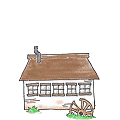




 The Aleve (generic type) did help that, but the hand thing is driving me nuts. Sometimes it's just one finger, other times, it's my thumb.
The Aleve (generic type) did help that, but the hand thing is driving me nuts. Sometimes it's just one finger, other times, it's my thumb. Be kinder than necessary, for everyone you meet is fighting some kind of battle.





Growing the Way to Life and Love





Be kinder than necessary, for everyone you meet is fighting some kind of battle.





QuickBooks set up and Bookkeeping for Small Businesses and Farms - jocelyncampbell.com




Be kinder than necessary, for everyone you meet is fighting some kind of battle.
 1
1
















 It takes up to 6 months for the body to slowly pluck the trans fats out of the cell walls- but for us, it takes a single dose of 2 grams (one Pillsbury roll) to trigger pain the next day. Most of my fibro myaligia went away as I eliminated trans fats. We even talk with kitchen managers before sitting in a restaurant and make them check fry oil ingredients on the boxes. If this is your issue also, you do have to be very diligent about it.
It takes up to 6 months for the body to slowly pluck the trans fats out of the cell walls- but for us, it takes a single dose of 2 grams (one Pillsbury roll) to trigger pain the next day. Most of my fibro myaligia went away as I eliminated trans fats. We even talk with kitchen managers before sitting in a restaurant and make them check fry oil ingredients on the boxes. If this is your issue also, you do have to be very diligent about it.




Always put your eggs in one basket.........why would you carry two?








1. my projects




 1
1




 . A podiatrist who I spoke to told me that shortening of the Achilles tendon and injury to the big toe joint are common amongst girls who wear high heels. When these shoes are worn constantly the big toe joint takes a beating while the heel which is designed for this impact is just along for the ride.
. A podiatrist who I spoke to told me that shortening of the Achilles tendon and injury to the big toe joint are common amongst girls who wear high heels. When these shoes are worn constantly the big toe joint takes a beating while the heel which is designed for this impact is just along for the ride.











Work smarter, not harder.




 1
1




Get involved -Take away the standing of corporations MovetoAmmend.org












 2
2




May You Walk in Beauty,
Sharol Tilgner ND
Sharol's books available at website
http://www.youarethehealer.org
https://www.facebook.com/youarethehealer.org/




 1
1





|
You can thank my dental hygienist for my untimely aliveness. So tiny:
Homestead Pigs Course
https://permies.com/wiki/365748/Homestead-Pigs
|




